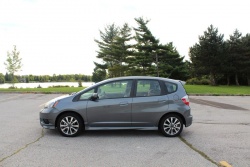 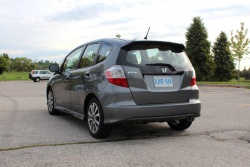 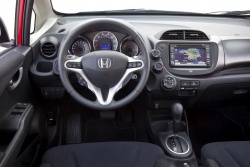 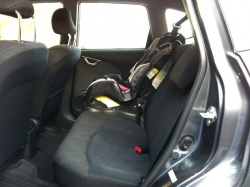 2012 Honda Fit. Click image to enlarge |
Review by Justin Pritchard
Vehicle Type: Compact five-door
History/Description: The spiritual successor to the Civic Hatchback, Honda’s Fit launched in Canada for 2007 with a cleverly-designed body and cabin that translated into a whole whack of space in a small package. Big on flexibility, efficiency and reliability, Fit found homes in the driveways of thousands of active Canadians, students, busy couples, pet lovers and outdoors buffs alike.
Crammed with 2,572 litres of interior volume and 1,622 litres of cargo space, Fit owners benefit from rear seats that flip up or down to accommodate a variety of items. Tall plants, bikes and even furniture can be fit inside – making the Fit an ideal alternative to a larger, thirstier crossover SUV to many shoppers.
Music lovers will notice the availability of a 200-watt stereo system that comes with six speakers, tweeters and a five-mode equalizer. The stereo is MP3 compatible, and offers an input jack as well as a USB input.
All Honda Fit trim levels, namely the DX, LX and Sport, feature standard power windows, tilt and telescopic steering, up to eight beverage holders and a fuel consumption display. Air conditioning is available on every model where it isn’t standard. Safety is covered by an advanced antilock braking system, active headrests and side curtain airbags on all models.
Honda’s Advanced Compatibility Engineering (ACE) body structure technology is at work as well, helping with a top-of-class list of standard safety features. ACE is designed to offer the best possible crash impact performance by sending crash energy around the body structure.
Engines / Trim: All models were motivated by a 1.5L i-VTEC four-cylinder engine, offering up to 117 horsepower. The engine drives the front wheels through either a five-speed manual transmission or a five-speed automatic. Paddle shift functionality was available on the Sport model, as was a stability control system in years before it became standard.
DX, LX and Sport trim grades ascend from basic to loaded, with the Fit Sport offering up-level cosmetics like fog-lamps, extra body cladding and alloy wheels. Note that for 2009, a facelift advanced the Fit’s looks and cabin considerably, and bumped horsepower from from 109 to 117. You’ll find an all-around more upscale package in a 2009 or newer model as a result, if your budget allows it. The 2009 update also saw changes that helped the Fit earn a “Top Safety Pick” rating from the IIHS.
What Owners Like: Fit owners tend to rave about mileage, versatility, handling, braking, maneuverability, visibility, ergonomics, and a surprising level of on-board roominess, despite the machine’s compact size. In all, Fit is reported to be an easy car to drive, park and live with on a day to day basis.
At-hand storage in the cabin, especially in the form of cupholders, is praised too – and especially on face-lifted models. The manual transmission is easy to operate here – with a very quick and light throw and a light, forgiving, easygoing clutch. Note that the 09 and newer Fit won a ‘Best New Design’ award from the Automobile Journalists Association of Canada (AJAC) for its commendable combination of looks and functionality.
What Owners Dislike: Fit owners typically complain about a noisy engine and ride, abrupt ride characteristics in some situations, and diminished performance when the vehicle is loaded up. Seats in the pre-facelift models are commonly accused of being uncomfortable – a fact which your writer can back up. As the owner of a 2008 Fit LX, it’s the only car I’ve ever driven that requires a pillow to compensate for the complete lack of lumbar support. Fit could, additionally, use a sixth gear on the highway.
Honda Fit Owner Reviews from Trader.ca
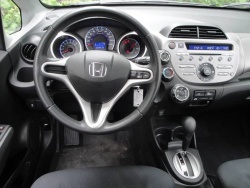 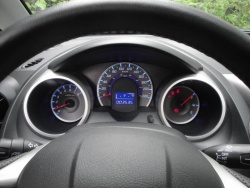 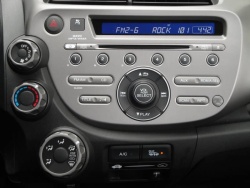 Honda Fit, 2007–2013. Click image to enlarge |
Common Issues: On a test-drive, be sure to inspect your potential used Fit candidate for signs of damaged or peeling paint. The latter may be most prevalent on the front and rear bumpers. Many owners taking to the web to share ownership experiences say they wish for a more durable finish from their Fit.
Check for signs of rust, or repaired rust, around the rear wheel wells where the steel body panel meets the bumper – especially in first generation models. Other areas to check for corrosion include the lower, inner edges of the trunk and doors, the edge of the hood, and around the hatch-latch. Confirm that the rear bumper is properly attached to the body too, as a few small clips hold it on, but they’re somewhat easily broken.
Some reading on finish durability here and here.











